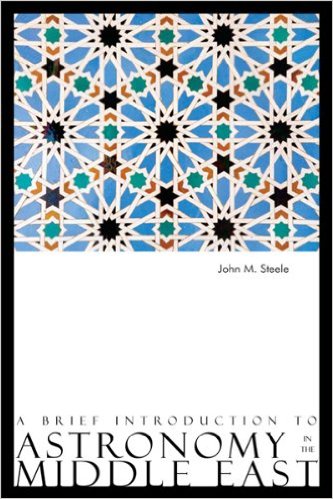
A Brief Introduction to Astronomy in the Middle East
Charles Sweeney
Steele, John M.
2008, Saqi, 978-0-85356-428-4, $11.95 pb
Professor John Steele, whose specialty is the history of Mesopotamian astronomy, traces the science back to the Babylonians, beginning with the origins and development of schemes for modeling planetary motion, and discusses their lunar calendar of 29- and 30-day months. The conquests of Alexander the Great allowed Greco-Roman astronomers to draw on these sources and construct ever more accurate models. Early Islamic practice relied on astronomical observations to determine the times of prayer and the direction of Makkah. Steele reveals how medieval Islamic advances in astronomy, and the design of precise instruments such as the astrolabe, led to later breakthroughs by Renaissance figures like Copernicus and Kepler. Perhaps the most important legacy from the Middle East is the very idea of astronomy as a science and the application of mathematics to celestial observations.
You may also be interested in...

Nomadic Chieftain’s Biography Unveils Dynamics of Colonial Expansion
Historian Tetsu Akiyama challenges the narrative that the Kyrgyz were a “static and monotonous ‘traditional’ society’” destined to be subsumed.
In the Aftermath of Rome's Collapse, These Communities Shaped the Mediterranean
Three regions of the post-Roman Mediterranean, from 400 CE to 1000 CE—the Latin West, Byzantium and the early Islamic world—are the focus of this work.
British Library’s 500-Year-Old Nizami Manuscripts Shed Light on Power of Art and Poetry in 12th-Century Herat
Persian and Mughal scholar and specialist Barbara Brend presents a comprehensive study of one of the most highly esteemed works of Persian Literature.